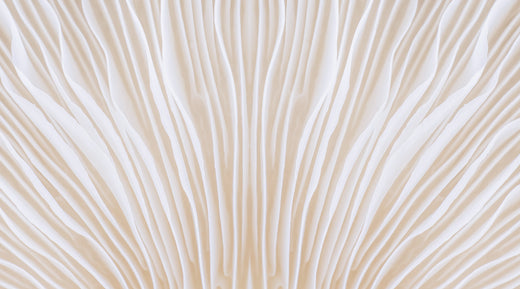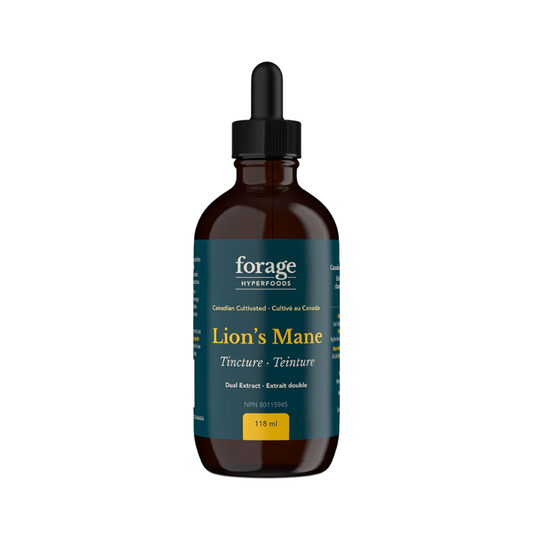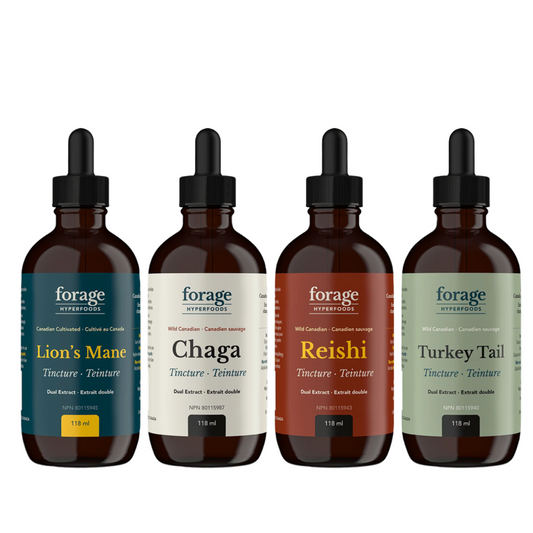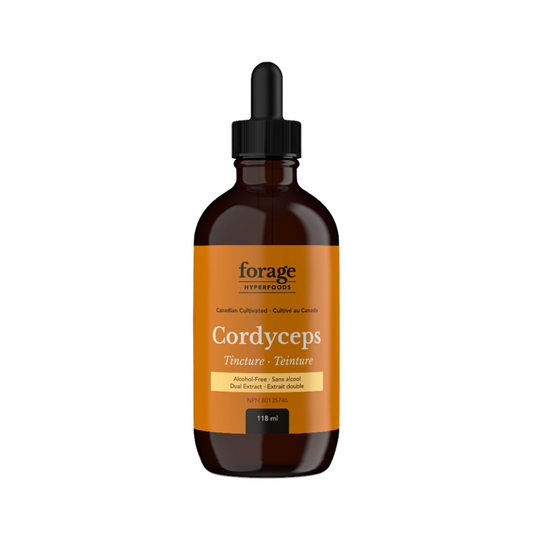
Everything You Need to Know About Mycelium
Share
Did you know that there’s a worldwide web underneath your feet? No, we’re not talking about internet signals. We’re talking about mycelium—the root system of a mushroom.
In this article, we’ll be exploring everything you need to know about mycelium, including its purpose, how it’s used commercially, and how it compares to the fruiting body when it comes to nutrients.
What exactly is mycelium?
When most people think of a mushroom, they visualize the stalk, cap, and gills. These above-ground parts of the mushroom are called the fruiting body and comprise the organism’s reproductive structure.
Many people don’t realize that below the surface is a dense mass of fine, thread-like fibres called hyphae. This mass of fibres is known as the mycelium, and it’s an essential part of the life support system of the fungus. The mycelium root system extends into the soil, plant matter, wood, and other materials to pick up water and nutrients that produce and support the mushroom (fruiting body).
The “wood wide web” beneath your feet
The underground network of fibres that make up the mycelium doesn’t just serve to feed the mushrooms above ground. Research has shown that the hyphae form a communication network with other plants and work symbiotically to facilitate the exchange of nutrients all over the forest.[*] This fascinating interconnectivity is often referred to as the “wood wide web.” [*]
Commercial uses for mycelium
As if supporting the growth of the entire forest wasn’t enough, mycelium’s fast-growing fibres are also used to produce various materials used for packaging, clothing, food, and construction. It’s used to make everything from faux leather, plant-based meat substitutes, and scaffolding for growing organs.[*]
When harnessed as a technology, mycelium also helps reduce plastics that are rapidly accumulating in the environment. For example, Mushroom® packaging is on the market as a replacement for Styrofoam™ and is available in both the U.S. and Europe.
The nutritional differences between mycelium and fruiting bodies
Functional mushroom supplements are either made from the fruiting body or mycelium. Is one more beneficial than the other? Yes—the benefits of functional mushrooms are derived from their active compounds. These compounds are found in abundance in the above-ground parts of the mushroom (fruiting body) and less in the mycelium.
The most important of the key compounds in fungi are called beta-glucans—soluble fibres that come from the cell walls of fungi. Beta-glucans offer a host of health benefits, including immune support, blood sugar regulation, and increased endurance, to name a few.[*] You’ll find, on average, over ten times more beta-glucans in the fruiting body than you will in mycelium that’s been growing on sterilized grain, such as brown rice or oats.[*]
Suppose you purchase a functional mushroom product that includes “freeze-dried myceliated brown rice” in its ingredient list. In that case, you’re essentially receiving ground-up grain with mycelium mixed in. This type of product contains very little of the beneficial compounds functional mushrooms are known for, and doesn’t contain any whole mushrooms at all!
To reap the most benefits, choose mushroom supplements that are wild-harvested or organically cultivated and made from the whole fruiting body.
The takeaway
Mycelium is a vital part of the life support system of a fungus. It’s also used to make many impactful products.
However, when it comes to purchasing functional mushroom supplements, we recommend you choose those made with whole fruiting bodies. The fruiting body is richer in nutrients, as that’s where the mycelium sends the “food” it gathers. Still, there would be no fruiting bodies without mycelium, so give thanks to this incredible “wood wide web” the next time you set foot in a forest or consume your health-boosting mushroom supplements.



